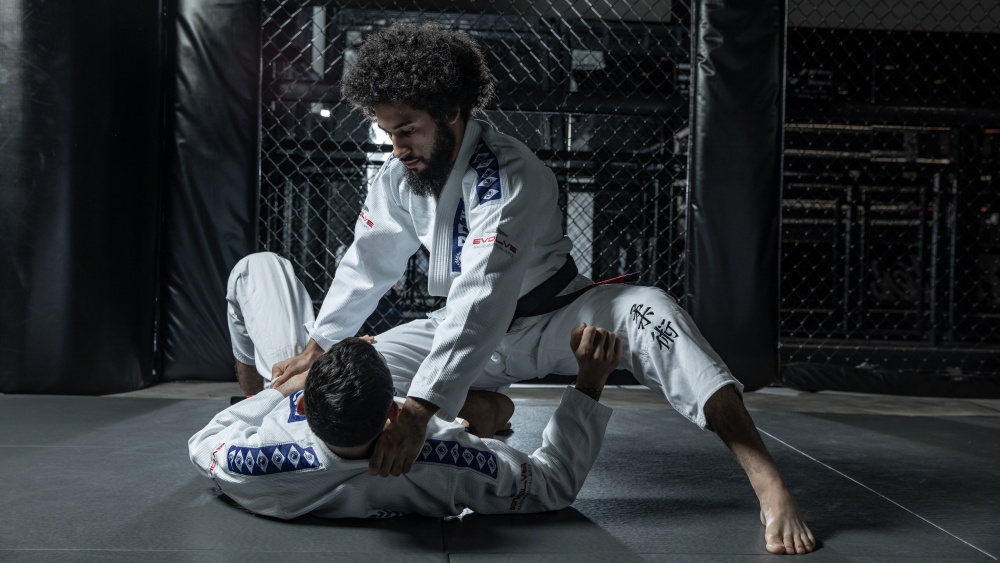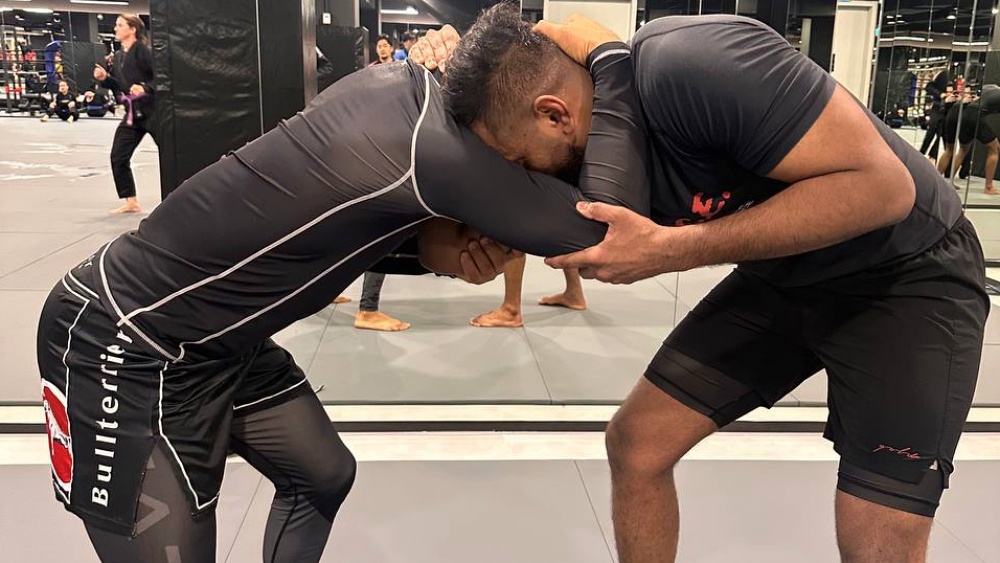Knee on Belly (KOB), sometimes known as the knee ride, is a premier controlling position in Brazilian Jiu-Jitsu. The body position is somewhat similar to side control, where you stay on your opponent’s side, but you place your knee next to your opponent’s belly.
The main difference from side control, though, is that you will be able to push your opponent’s leg away and stand up while keeping their limbs isolated. This makes it an excellent guard passing position as well as a good way of finishing someone off if they are already hurt or tired. Today we’ll talk about the knee on belly and all its intricate details.
Knee On Belly Defined
Simply put, the knee on belly is a pin used to control an opponent. It is unique because you use a small part of your body to apply pressure on an opponent’s torso. Typically, it is applied on an opponent’s abdomen, but there are variations where you place your knee on the chest. Both variations are effective in causing discomfort and can be great tools to set up attacks.
The great thing about the knee on belly position is its versatility. You can use the KOB to float on top position, using it to transition to the mount. You can also use it as a crushing pin in itself. This is especially effective in mixed martial arts; you can go to knee on belly as a headquarters-like position where you can drop vicious ground and pound.
Common Ways To Get To The Position
The easiest way to get to the knee on belly position is from side control. Both positions require you to be on the side of your opponent. From side control, start by grabbing your opponent’s lapel using your near-side arm. Use your far-side arm to post on your opponent’s hip. From there, you can push yourself up just enough to have space for your knee. Place your knee across the abdomen, make sure that you keep yourself balanced by keeping yourself upright and extending your leg at an angle.
You can also grab your opponent’s pants (usually near the seam of the knee) using your far-side arm to control the hip. This configuration should be stable enough to nullify basic hip bridges, but do note that you need to stay alert as escapes from the knee on the belly usually come in combinations. Keep your far leg mobile to “surf” on top of your opponent as they try to buck you off.
Maintenance
While the knee on belly is an excellent way to pin your opponent, the fact that you are using only your knee makes it easier to escape, especially compared to other pins like side control, mount, and kesa gatame. When doing the knee on belly, your mindset should always be focused on the fact that you might need to work on improving your position. Most BJJ athletes use the knee on belly more as a “checkpoint” position, meaning that you use the technique with the intent of transitioning to better pins.
A classic sequence in BJJ uses the knee on belly from side control, then directly to mount if the legs are clear. This is a safe and functional sequence because the mechanics of the knee on belly starts from side control and ends with a position that almost looks like the mount. Also, using the knee on belly in the gi is easier to maintain as you can grip the belt, pants, and lapel.
If you watch heavyweight matches in the gi, you’ll see that many athletes go to the knee on belly to tire out their opponents. They don’t stay there the whole match, though; they eventually transition to mount or attack with a submission almost every time.
Common Attacks From The Knee On Belly
The pressure of the knee on belly creates many submission opportunities. Perhaps two most common are the collar choke and the armbar. Let’s say your opponent is the type that shells up when pinned; you can now use this moment to grab the collar and set up the classic collar choke. This attack is very effective because you cannot remove the knee on the belly and protect your neck simultaneously.
In the above video, BJJ Blackbelt Pablo Popovitch demonstrates the specifics of the cross choke from knee on belly. Notice that he loosens the gi near the neck before he goes to knee on belly. This is to make the initial grip easier to get.
Another common attack from the knee on belly is the armbar. This is especially useful for those who use the knee on belly as a way to tire out their opponents. Watch as BJJ Blackbelt Gustavo Gasperin display and explains the details of the technique. The first thing to do here is to isolate the opponent’s arm. This can be done by pummeling for an underhook as your opponent pushes your knee. From here, you can pivot towards the back, and the armbar should be available.
How To Escape The Knee On Belly
Generally speaking, it’s good to turn towards your opponent when under the knee on the belly. Use your forearm to frame on the knee and shrimp out to the side. Be careful of overextending your arm as you might get countered with an armbar. Watch this great escape demonstration by BJJ athlete Alberto Serrano in the video above.
Final Thoughts
The knee on belly is a great tool to add to your toolbox. It is a technique that is very easy to learn and can significantly improve your attacking chances. Understand that this still needs consistent practice for you to be proficient with the technique. Find a partner and drill both top and bottom positions.
Specifically, work on balance when on top and staying tight when on the bottom. Working on these for weeks will surely help you gain confidence when you encounter the knee on belly. Try this out in your next rolling session!
You may also like:

















